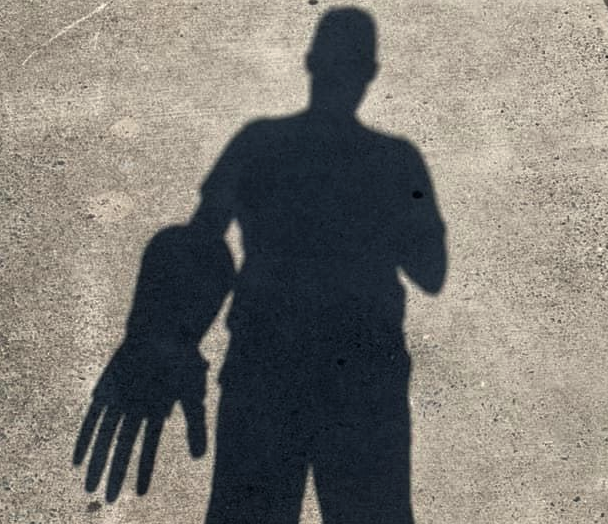Summer STEM camps can be the best of times and the worst of times. Trying to keep students engaged when out of the routine and mindset of school is not for the faint of heart but it can be done.
The Science Of recently took part in a camp activity at the Sci-Tech Institute, a partnership between Winston-Salem State University and Wake Forest Innovation Quarter that provides opportunities for school-age students to explore science, math, and technology. The program is subsidized and the cost to families is minimal. In short, butts are in the seats.
To make a summer camp science lesson engaging, and your audience wants to be there when they know their friends are home, at the pool, playing videogames, or anything else that – on the surface – seems more interesting than science, you need a hook. Something to pull them in and get their attention – something about what you’re teaching that makes the science gross or cool or scary. Especially when your students for the day are upper elementary students as ours were.
This is our hook:
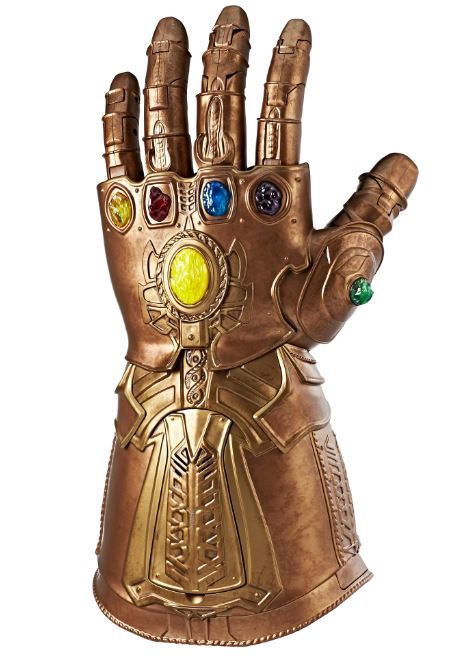
The Infinity Gauntlet from Hasbro. An amazing pop culture hook for STEM (c) Hasbro, Disney
The Infinity Weenie
This is the articulated, light-and-sound version of the Infinity Gauntlet from Avengers: Infinity War. It’s made by Hasbro, and it’s been our hook several times at different events and for wildly different audiences. On a table at a “town hall” style meeting at Innovation Quarter’s Biotech Place, the Gauntlet served as what Walt Disney called a “weenie” – it pulled people over to our table. From kids to adults, everyone wants to try it on, move the fingers and get a picture taken with it for social media. From there, we’ve lured folks in, and it’s time to talk science!
Chiefly, we use the Infinity Gauntlet to talk about prosthetics, replacement limbs and robot “hands.” The Gauntlet has an elegant design – insert your hand, and you’ll find five rings that you hook with your fingers. Pull on the rings, and the fingers move (and the Infinity Stones light up and it makes its cosmic sounds). As cool as it is though, those who try it on notice a few limitations, chief among them…no snap. Physically, you cannot snap the Gauntlet’s fingers.
Now, the Hasbro engineers and designers did a fantastic job with the design. The fact that it doesn’t snap is not on them. But when a kid notices that you can’t snap while you’re wearing it…that’s when we’ve got them doubly hooked.
“Well, do you think that people who need to have prosthetic hands would like to be able to snap?” we’ll ask.
“Yeah – I bet they would,” is usually the answer.
“So how could you make one of these that could snap – what would it need? What would you need?”
And that’s how you turn…bluntly put, a toy on a table into a discussion about a bright, curious mind staying interested in STEM through their school years, and into college and beyond. A hook, and a question that can’t be answered without more learning that, if we’re lucky, may one day turn into a goal.
We’ve long held that many of the technological marvels that we take for granted today owe their existence to senses of wonder and internal questions that couldn’t be quieted. For a generation of engineers, physicists and rocket scientists, Star Trek showed what the future could be like, so they invented many of the pieces. Virtually all of us carry communicators today. In many ways, the science and “science” of the Marvel Cinematic Universe plays the same role today that Star Trek played in years past.
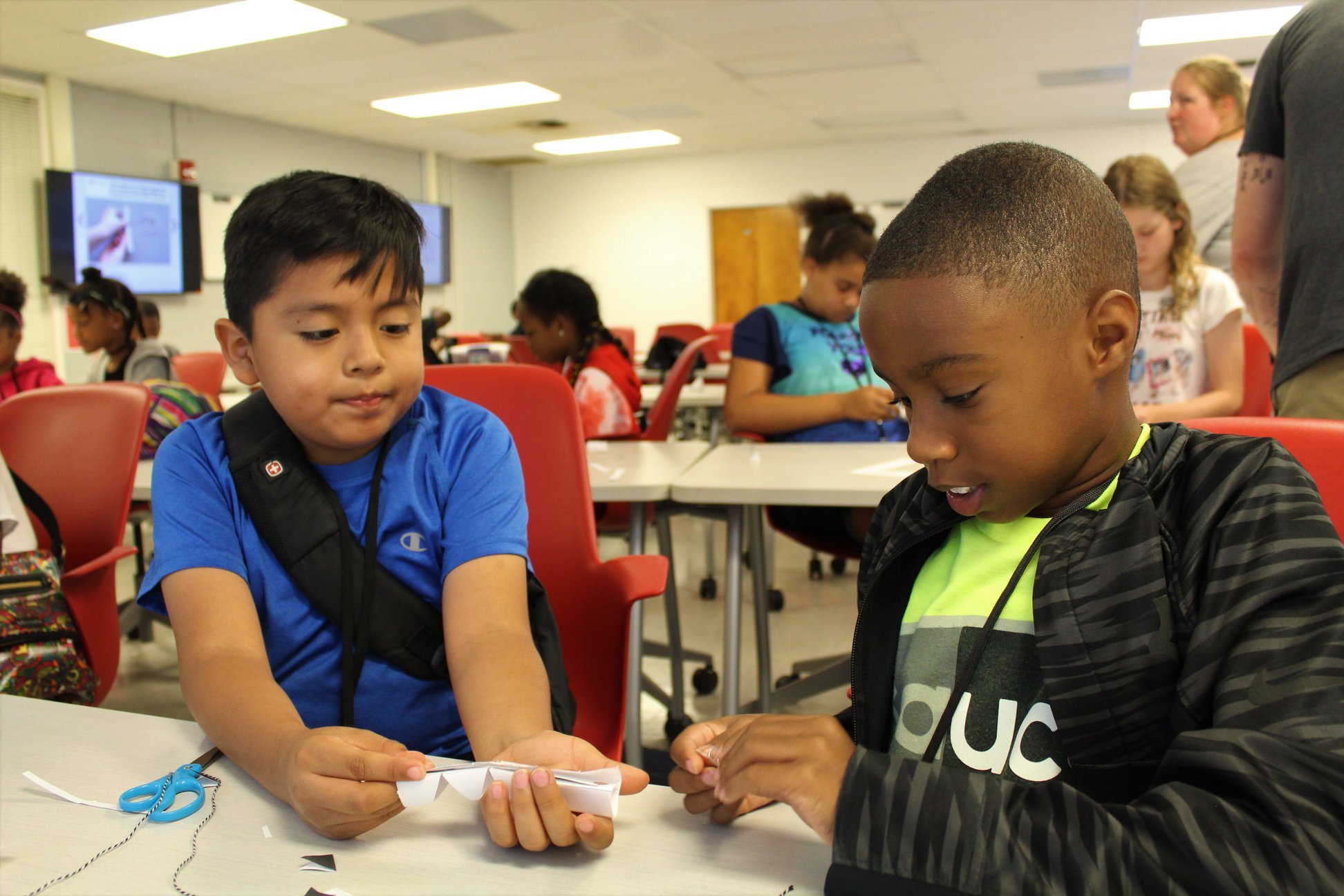
That’s some high-level Gauntlet-building right there…
Back to the Summer STEM Classroom…
So – the Infinity Gauntlet is immediately recognizable, and all we had to do was walk in and they were hooked. This is the hard part; a good activation strategy is key but makes the rest of the lesson easy.
We gave a short introduction to what we were going to be talking about – robot hands and then jumped into the lesson from Mystery Science so the students could easily get into the activity of building their own version of the Infinity Gauntlet.
Mystery Science offers STEM lessons aimed at elementary science students, but all of them could be easily scaled upward for higher levels. And this piece is important – yes, there are instructions out there for making robot hands, but why reinvent the wheel? If you find a resource that matches what you’re looking to teach with a pop culture hook, use it.
The Mystery Science lesson that we used (“Robot Finger” from “Why do your Biceps Bulge?”) begins with a short video that talked about robots and how they were designed along with the limitations of the design. This background scaffolded the students so that we were all on the same page when we began the activity of designing a robot hand. The videos tied key vocabulary to the activities and made the activity relevant by showing how our actual muscles work – and how our robot fingers, and then hands, would mimic our own.
Once we began the activity, we used the Gauntlet as a teaser for them to model their own robot hands on. The templates and instructions provided by Mystery Science were all developmentally accurate and allowed for everyone to follow along at their own pace. Even with a large group, it was easily facilitated with two adults.
Students were able to first make a robot finger and then create three more to make a robot hand (the thumb was already on the “hand” template). It was amazing to watch the excitement and engagement with this activity. One student proudly said, “I’m doing robotics up in here!”
Students were able to put colored stickers on their completed hands to complete their “Gauntlets” and wear them around. Many noticed that it was impossible to snap with the current design but that then became the challenge to them: redesign it at home so you would be able to snap. Thanks to the plans and approach of Mystery Science, the cost for the materials (paper, index cards, small stickers, string, paper clips) was minimal.
And the Infinity Gauntlet was held out as in incentive. Students who completed their robotic hand could try on the Gauntlet – and we were right there to talk about similarities and differences with the robotic hands that they had just completed.
Reflection
The exploration of muscles and bones coupled with the extension activity to make a robotic hand makes this a perfect summer camp activity – a pop culture hook makes it interesting and takes it away from a “school” type of science lesson. But more than serving as a hook, the pop culture angle gives them ownership of the lesson. Virtually every student shouted out “the Infinity Gauntlet” at the start of the lesson when we asked if anyone knew what it was. It was familiar in their world, so we used it as a bridge to science. And as always when you do this – make sure you know about the pop culture reference as well. That’s key, especially with younger students. The fact that an adult can talk with them about Captain America, Thor, Black Panther, Thanos and all the rest connected with Infinity War and Endgame? That’s the relationship building that’s crucial to teaching.
For a more formal setting, we’d certainly pair this with a pre-test and a post-test to show learning occurred during the activity, and expand things out a little following along with some of Mystery Science’s ideas, as well as some add-ins – like an actual demonstration of chicken feet and tendons. Watch the videos with the lesson – you’ll understand.
And yes, priced right around $100, the Infinity Gauntlet from Hasbro is a bit of an investment for education. We’re not going to insult you with jokes about how much of their own money teachers spend on school supplies, but it would be the coolest tax write-off ever. Especially if you do informal STEM outreach or activities. Also, while the Infinity Gauntlet has legs that will keep it cool and well-recognized by students and the public for at least a generation, Hasbro is coming out with the Avengers: Endgame version in October, which can be used to stress a bit more technology and making in the lesson…
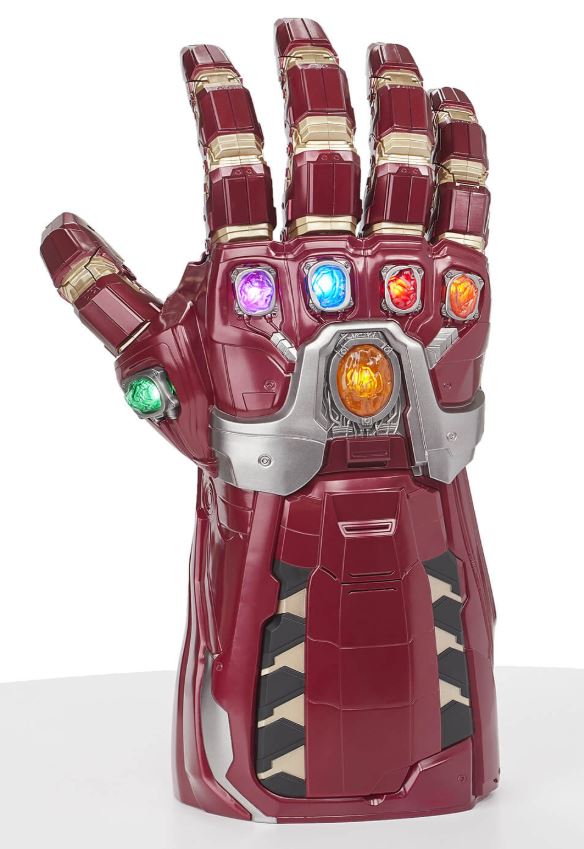
The Iron Man version. Still chokes us up… (c) Hasbro, Disney
All in all, hooking pop culture to a lesson is a powerful tool in your toolbox as an educator. Match the hook with an intriguing lesson, and you’ve created an experience that your students will be talking about for the rest of camp, and hopefully for a long, long time after.
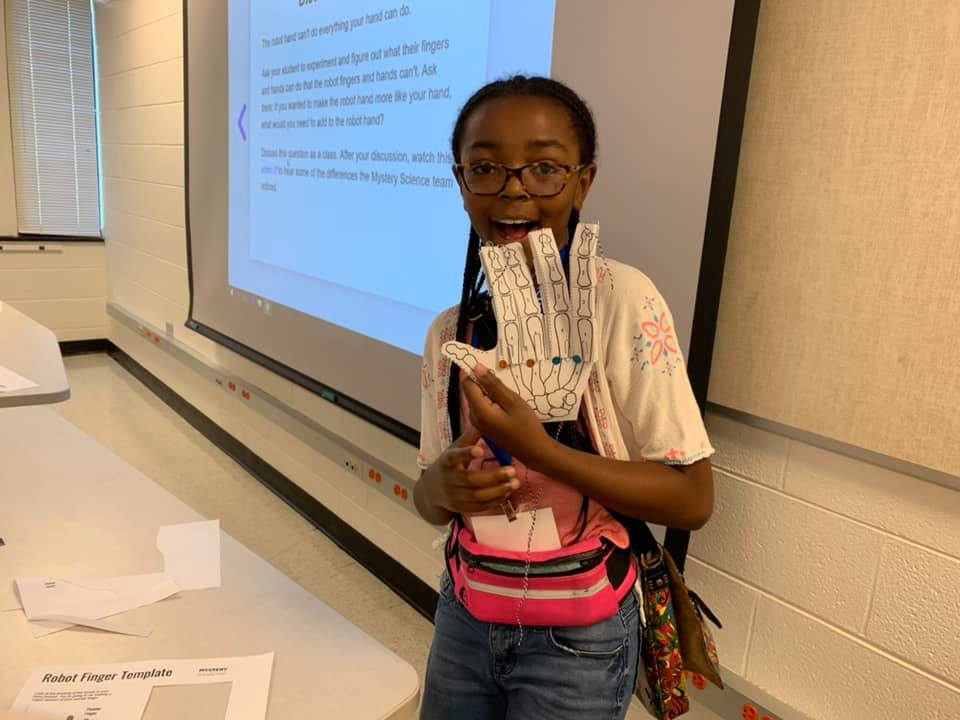
A happy owner of her own “Infinity Gauntlet” and future biomechanical engineer?


